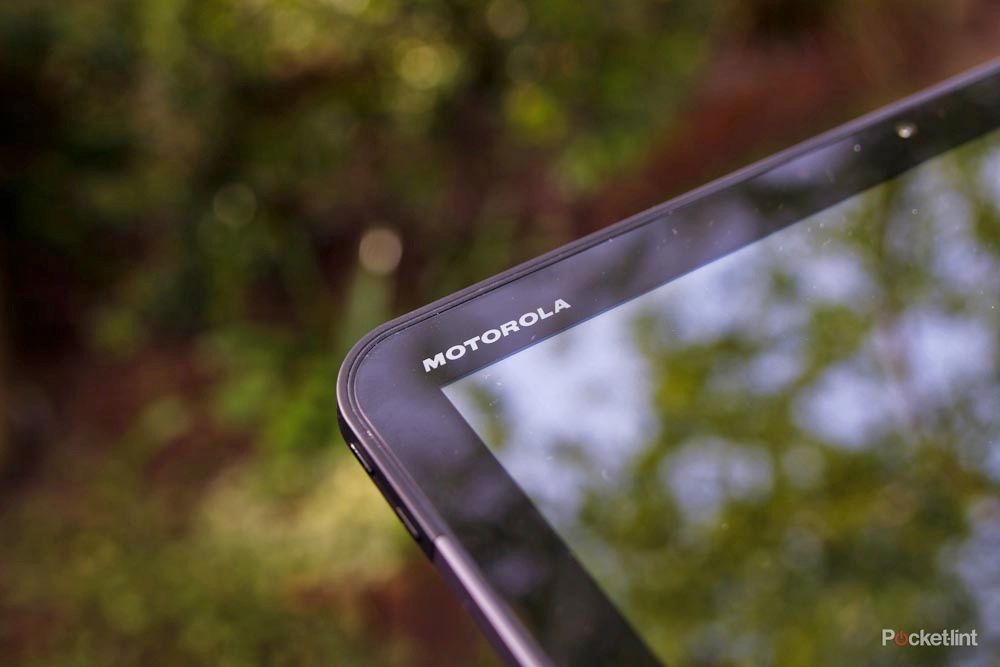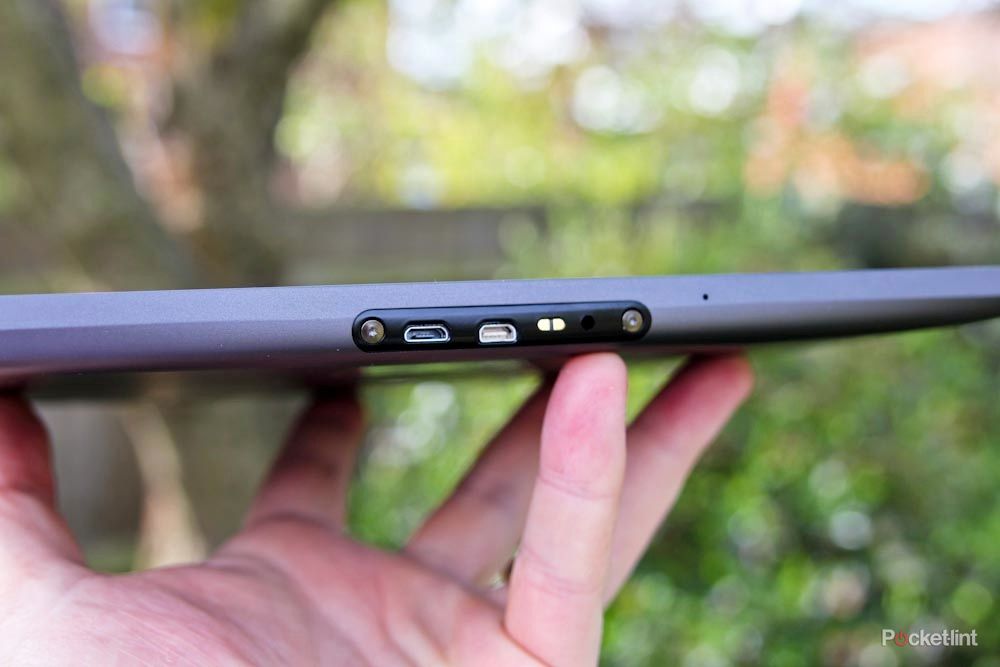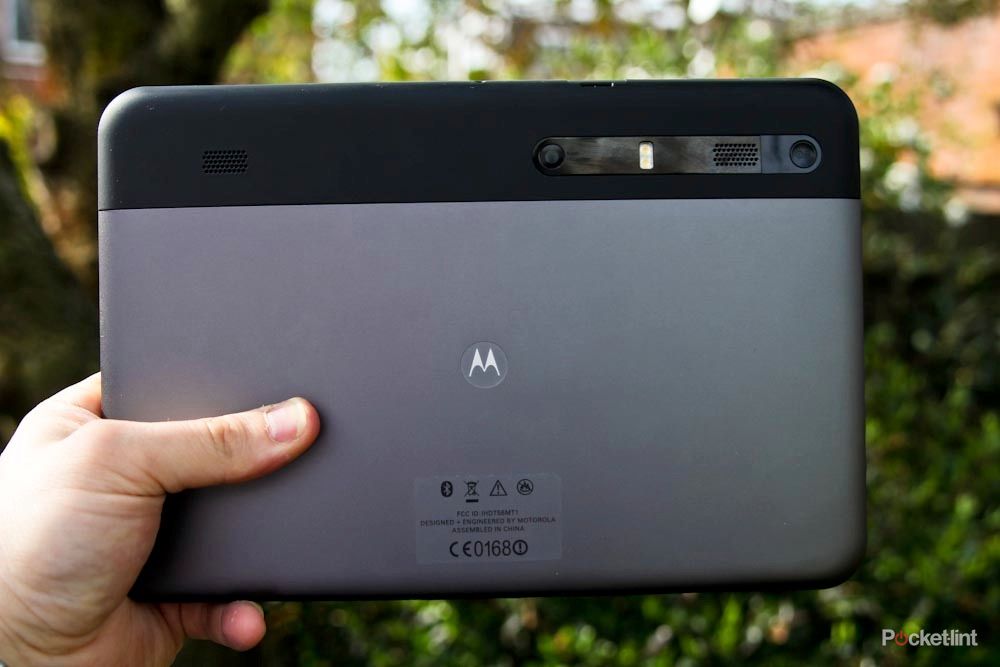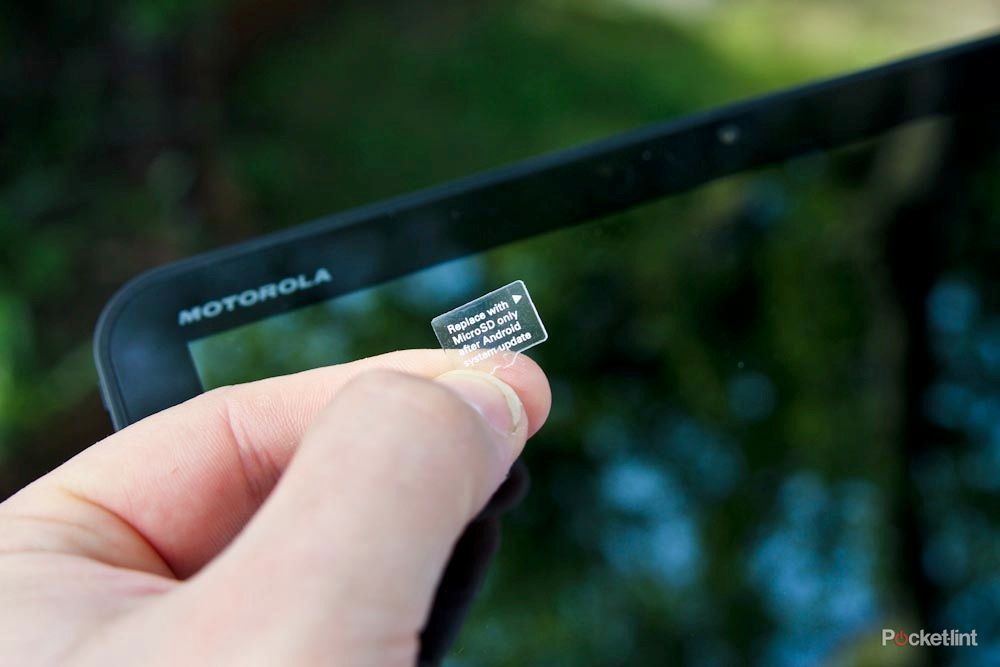The Motorola Xoom is the first tablet to touchdown with Android 3.0, Honeycomb, the Google operating system designed for tablet devices. It’s more than just the first tablet to arrive with a new version of Android - it’s the device that Google rubberstamped, it’s the device that they designed and refined Honeycomb with. In short, the Motorola Xoom is both the showcase and the development device for Android tablets, much like the Google Nexus S was for Gingerbread.
Our quick take
Scoring the Motorola Xoom is something of a challenge as at the moment it isn’t delivering the experience it could, that much clear. But it has potential oozing from every pixel. Taking into account that there is some tweaking to be done on the software front, we’re willing to give Motorola the benefit of the doubt: we’re willing to accept the Xoom’s quirks. The hardware is right, it is powerful and feels capable of delivering the rich consumer experience that is just around the corner.
We’re just waiting for Honeycomb to settle down and developers to fire up and we’re sure that at that point the Xoom will then hit the high notes. As we’ve seen in phones, some will take to the Motorola Xoom’s attractive native Honeycomb offering, but we’re sure there will be those that opt for a potentially more feature-rich customised version on rival devices.
Additional hands-on photos by Stuart Miles.
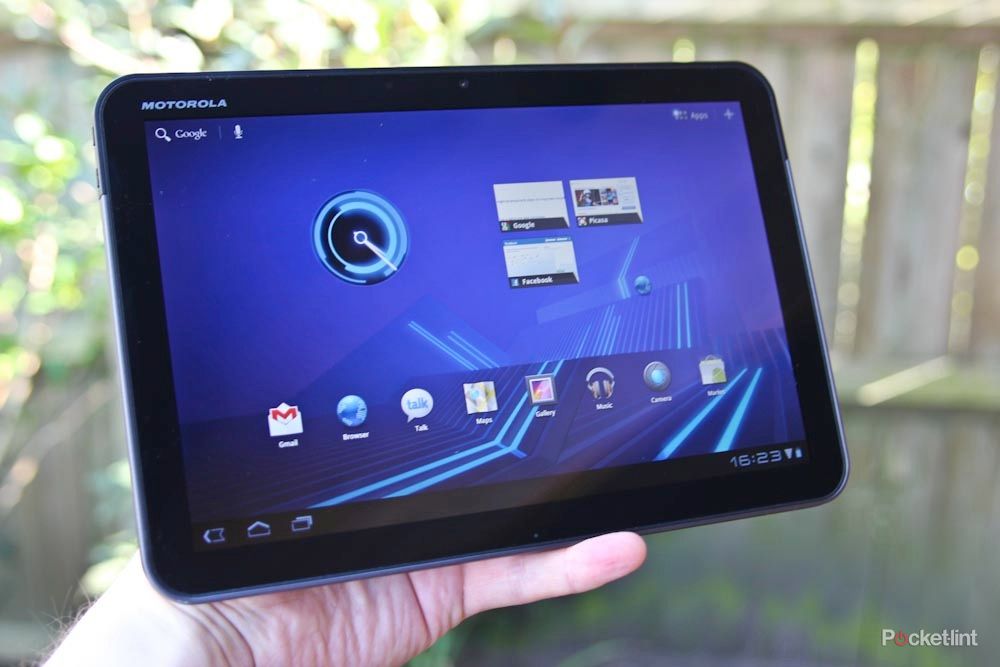
Motorola Xoom - 4.0 / 5
| FOR | AGAINST |
|---|---|
|
|
As such it’s the Honeycomb device that has had the most attention, but being first off the line comes with some drawbacks, as we’ll see. There is a great weight of responsibility on the shoulders of Motorola’s 10.1-inch tablet: people are using it as a yardstick by which to measure the success of Android tablets against the Apple iPad, a comparison that isn't completely fair (not that you care about ethics when handling over your cash) and one that is likely to shift dramatically during the Xoom's life.
The Xoom is distinctly Motorola and even without the branding you’d be hard pressed to think it was anything else, even on a device that is essentially a flat slab. You get some of the look a feel of the Motorola Defy, the slightly tactile top covering and rounded corners especially.
The Motorola Xoom measures 249.1 x 167.8 x 12.9mm and offers up a screen that is 10.1-inches on the diagonal, with a high resolution of 1280 x 800 pixels. That gives it a pixel density of 149ppi. This means it is a small step above the iPad 2 in terms of size, resolution and pixel density, for those that want to mark the scorecard. However, it doesn’t quite have the vibrancy of the iPad’s IPS display, so it is much of a muchness as they say, and like the iPad, viewing the display outdoors on the bright sunny day is nigh on impossible. One thing that you might find slightly more natural is the aspect ratio - it actually comes out at 8:5, but once you take a slice off the bottom for the System Bar, you’re actually closer to 16:9, which is great for watching movies. By the same measure, the screen is perhaps less well suited for reading text than the iPad 2 due to its narrower aspect.
The screen bezel is kept to a comfortable minimum, offering up approximately 15mm around the display, which gives you enough space to hold the tablet without obscuring the screen and gives it a premium look when compared to some lesser devices with expansive bezels, like the ViewSonic ViewPad 10s. The face is free from controls - as Honeycomb uses on-screen controls - so all you have is the front-facing camera.
Across the bottom of the Xoom you’ll find a run of connections, including Micro-USB for data transfer, a DC input for the power supply and a central micro HDMI connection. One oddity is that you can’t use the Micro-USB for charging, which means you’ll always have to drag around the charger. On the top of the Xoom you’ll find the 3.5mm headphone jack and a slide-out cover which is where the microSD card and SIM card fit (depending on what version of the tablet you have).
Flip the Xoom over and you’ll find a 5-megapixel camera, supported by a dual LED “flash”, grills for the stereo speakers and the only proper button on the device, which is the power/standby button, working in the same way as the power button on every other Android device.
The Xoom is pretty weighty in the hand, tipping the scales at 730g. This makes it a noticeable strain when holding it one-handed, although at only 130g heavier than the iPad there isn’t really that much in it real terms, but it is 20% heavier. You’ll find yourself resting it on your lap most of the time when in use, or perched on your knees in bed - such is the life of a tablet. With that weight, however, comes a feeling of solid build quality. It doesn’t creak or flex. The back feels solid to the touch and of all the tablets we’ve seen so far it definitely sits at the top of the ladder, along with the iPad, when it comes to build.
Besides being the first Honeycomb tablet, it also comes to market flying the flag for the Nvidia Tegra 2 1GHz dual core chipset that lies within. We’ve seen this chipset before in a number of devices - the LG Optimus 2X and ViewSonic ViewPad 10s for example - and it’s certainly powerful. Launched at CES 2011, Tegra 2 natively supports things like 1080p video encoding and decoding and supports Flash video too. We’ve been impressed with the sheer power of Tegra 2 devices so far and the Motorola Xoom is no exception. It also helps that the Xoom is stacked with 1GB of RAM, although some of this is given over to running Honeycomb, so isn’t all available for applications. That said, we didn’t find it slowing down when we had a lot of apps running, but some of that might be disguised in the instability the tablet displays occasionally.
Internally you’ll find 32GB of storage. Although the Motorola Xoom features a microSD card slot you can’t use it to expand the memory as that functionality currently isn’t supported by Honeycomb. Support for microSD cards should come in the future as an update as we’re guessing it will be sooner rather than later. We suspect this has something to do with how Honeycomb manages its memory. On Gingerbread if you connected to a computer you have to “mount” the memory card before you could access the content - essentially it became another drive for your PC. Honeycomb by contrast doesn’t let you mount memory, so you can add and remove content whilst the tablet still has access to its memory. We suspect the delay in supporting the microSD is how to manage this memory along with the current setup of the internal memory.
Power the Motorola Xoom on and you are greeted by the sophisticated face of Android 3.0. It’s dark and serious, it looks and feels technologically advanced and a little geeky compared to the simplistic approach of Apple iOS or the awkwardly shoe-horned Android 2.2 that we’ve seen on tablets so far. We’ve written a lot about Android 3.0 Honeycomb in our review here on Pocket-lint and we’re not going to delve into all those details again here - if you want to know more, just head over and read that review to put the entire OS in context of the device. What we will do is quickly summarise the highlights and talk about the low points.
Honeycomb is a considered approach to tablets and comes with a better user experience than we’ve seen before from Android tablets. The core applications work very well and are well designed to cope with the sorts of thing you might want to do on a tablet. Gmail, Calendar and Contacts come stacked with features and work seamlessly with your Google account(s) once you sign in. The space that the Motorola Xoom offers is put to good use so it is possible to get things done: you’re not merely consuming this information, you get the feeling that managing and using it is achievable too.
The Chrome browser in Honeycomb is very nice indeed, offering up tabbed browsing and, once updated, supports Adobe Flash so you’ll be able to access a wider range of websites and get closer to a full internet experience. For us that means consuming more video and catch-up TV services become a reality, although it we'd like to see the option to have it identified as a desktop browser when visiting sites. It’s not a seamless operation from Flash and the browser will get overwhelmed, but it’s a feature we really like. The browser is blisteringly fast, offers an Incognito browsing feature and can open up with the familiar Chrome “most visited” grid so you can quickly and easily get to those websites that matter the most to you.
UK users might be disappointed to find that you can’t head over to the BBC iPlayer website in Honeycomb as it refuses to recognise the (mobile) browser and deliver content; we also couldn’t access the BBC iPlayer app through Android Market. It’s a bit of a fiddle, but if you download Dolphin Browser HD, you’ll be able to set the browser to identify as a desktop browser, at which point the BBC will relent and open the gates to all its licence-fee funded goodness.
Video support is reasonable on the Motorola Xoom, but this being a naked Android device it won’t support all formats out of the box, so the likes of MOV and DivX won’t play. However, it will munch its way through MPEG4 and although the tech specs that come with the Xoom say it supports up to 720p, we did get it playing some higher resolutions satisfactorily. Installing a different player may garner better results, but we suspect that this will be one area of differentiation between manufacturers: some will bundle wider codec support out of the box. As it is, Honeycomb doesn't offer anything to stream video content from a network drive or home server and Motorola hasn't added this functionality. It can be achieved through third-party apps, but given the rise of the popularity of DLNA, it's a feature we'd like to find out of the box.
Of course you get Honeycomb’s great YouTube app, with its wall of videos, and the music player is a great evolution of the standard Android music player. The 3D scrolling though albums in the New and Recent view has the sort of polish that we want. The onboard speakers have obvious spatial separation delivering a stereo effect, but are easily bettered by plugging in your own headphones. We found the sound quality was great and perfectly suited for music or movies on the move.
With two cameras the Motorola Xoom is ready to support all that video calling you might want to do; Google Talk will currently offer video calling from the Xoom, assuming the person on other end of the line has the hardware and software to accept your call, but it lacks the current cross-device simplicity that Apple’s FaceTime offers, and in reality, we’re holding out for Skype video calling on Android when proprietary applications will become less of an issue. Skype, without video, works perfectly well, just in case you’re wondering.
The rear camera offers up average quality photo capture, returning reasonable results which we’d say are adequate for a tablet, given how we find ourselves using the tablet for ad hoc pictures much less frequently than a mobile phone. The front-facing 2-megapixel camera naturally lacks the quality of the rear unit and returns softer images exhibiting more of the problems that these lower quality sensors have, namely a lack of detail and lots of purple fringing on high contrast edges. Still, you’re less likely to use that for photography and more for quick video capture and video chat so it’s good enough. The new camera interface is easy enough to use and the circular control means you can pretty much do everything with one thumb whilst gripping the Xoom.
Video capture from the rear camera offers up 1280 x 720 pixels at 30fps and is again average, not the best we’ve seen from an Android device and certainly not the worst. The new Honeycomb camera interface is easy enough to use, offering a few settings to tweak, which in video includes a timelapse feature. This is fine for some candid capture, but obviously on the Xoom you’ll need to support the device in some way or you’ll be sitting holding it for hours if you have plans beyond a timelapse of shifting clouds. Basic editing can be done using the Movie Studio app to stitch your movies together along with a soundtrack if you like, to then be uploaded to YouTube or shared elsewhere.
We’ve complained about on-screen controls on a number of tablets in the past. The response never seemed as good as from those devices that offer up buttons (either hard or soft). In the case of the Motorola Xoom, the new Honeycomb controls seem to work rather much better. It takes into account how you use a tablet, it seems intelligent and considered. The persistent controls on the bottom left-hand corner take a second to adjust to and we love the way they dim to a dot when you start watching a movie full-screen. There is a degree of inconsistency around how apps are controlled with menus appearing in different corners of the screen which is something of an issue, but it doesn’t stop apps from actually working.
The keyboard is responsive and the size really lends itself to bashing out emails with multiple fingers. There is only one gripe which is the location of the close arrow in bottom left-hand corner as we often found that we swiped this with the palm of our hand when typing, which was frustrating.
The Motorola Xoom comes loaded with your core Google Android apps, so you get the excellent Google Maps, and along with the GPS sensor you’ll be able to quickly plot routes and examine maps. The screen size really lends itself to mapping as you get to see a huge overview of where you are, or your route ahead - it supports Google Maps Navigation and Street View as you’d expect, both of which look fantastic on a large screen.
Adding additional applications to your Google tablet comes courtesy of Android Market. This will likely be where rival manufacturers will offer some differentiation, bundling apps or enhancing their in-house apps to suit the big screen. As this is native Android, you essentially don’t get anything outside of the normal Google array. Whilst Android 3.0 will support existing applications, those designed for the large screen are scarce. There are some good examples of apps that work well, like Pulse or Google Earth, but there is an immediate need for developers to update their apps to really take advantage of the screen space on offer. We’re not entirely sold on the implementation of Android Market on Honeycomb at the moment - the ability to switch between accounts used to install apps at the moment looks like it has the potential to confuse. We discuss the point further in our Honeycomb review.
The Motorola Xoom on paper certainly has the specs to wow. The basic pieces of the puzzle are all in the right place, but there is one problem that drags the whole experience down: Honeycomb isn’t stable enough to deliver the polished experience that will really wow customers. As a result, using the Motorola Xoom feels like you are using a development device rather than a polished consumer device.
This isn’t to say that the Motorola Xoom is unusable - far from it. But as it stands, crashes are frequent, especially in the browser, in Android Market and when using apps you install. We found that often the browser would stop responding, and needed us to put it in standby before it would start responding again and this is the case on both Motorola Xoom's we've been using. For a device that costs you £479 (Wi-Fi only) or £579 (3G + Wi-Fi) it needs to have more stable performance overall.
So is the Motorola Xoom dead in the water? No, it’s a fantastic tablet device that has heaps of potential. The Android Honeycomb user experience demonstrates all the features you want in a tablet, but feels like beta software. This isn’t exactly Motorola’s fault and it could be resolved with a simple update. Since the device launched in the US there has been an update to bring Flash compatibility, so we don’t think it will be too long before we see more. Put it this way: we’d pick the Xoom over any Android tablet that we’ve seen so far, because the core experience is immeasurable leagues ahead of the Froyo-packing Android Market-lacking cheap tablets.
The closest we’ve come to the Motorola Xoom experience so far is the Samsung Galaxy Tab. Samsung had made some tweaks to that device to acknowledge the size, but not enough - it was the best Android tablet of 2010, but it wasn’t right. The Motorola Xoom, by contrast, is right. But it rewards early adoption with instability in the OS. Some won’t be able to accept that sacrifice in a £500 gadget and will be drawn to the more established temptations of the iPad 2 - the 32GB model matching the Xoom price.
Battery life seems to sit at around 10 hours in fairly intensive use. We’ve been conscious of charging it fairly regularly, but certainly not every day when we didn’t us the device as rigorously as we would a mobile phone.
To recap
We can't really fault Motorola's hardware and the Honeycomb experience is far superior to Android tablets we've seen so far, but it's clear that the software isn't that stable, the price is high, not all features are supported and the Android Market needs to react quickly

